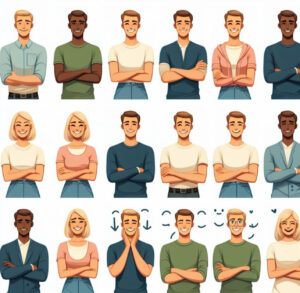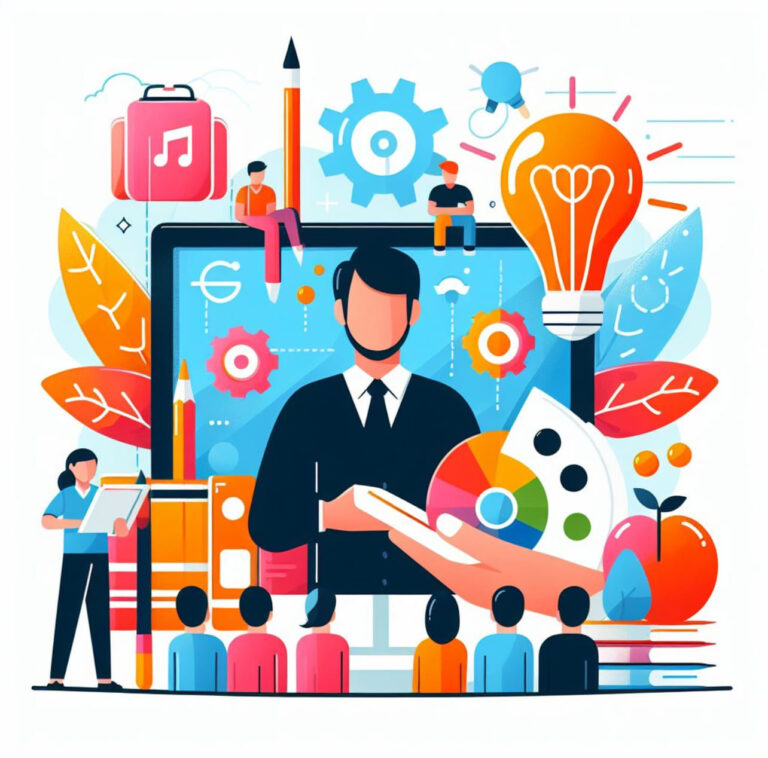

The Art of Reading People
How to read people more effectively? Have you ever watched the movie “The Proposal”? If you have, you probably remember the scene where Margaret Tate, a bossy and cold-hearted book editor, and Andrew Paxton, her assistant, kiss for the first time in front of his family. In that scene, they use their body language and facial expressions to show their attraction and nervousness. They lean in slowly, look at each other’s lips, and kiss passionately. Also, they display surprise and confusion when they realize they like the kiss. This scene shows how powerful and influential body language and facial expressions can be in communication.


Body language and facial expressions are forms of nonverbal communication that convey information about a person’s emotions, intentions, thoughts, and personality. They can also influence how others perceive and respond to us. Accurately reading them can improve communication skills, social interactions, and relationships. In this article, you will learn some of the secrets of nonverbal expressions and how to use them effectively.
Body language is the use of physical movements and gestures to communicate nonverbally. It includes posture, eye contact, facial expressions, hand gestures, head movements, body orientation, touch, and personal space. Facial expressions are the movements of the facial muscles that show different emotions. They include smiling, frowning, raising eyebrows, wrinkling nose, biting lip, etc.


Factors to Consider
- Culture. Different cultures have different norms and meanings for body language and facial expressions. For instance, eye contact is a sign of respect and honesty in some cultures. While in others, it is a sign of challenge or disrespect. For others, smiling is a sign of happiness and friendliness, while for some, it is a sign of embarrassment or submission.
- Context. The same nonverbal expression can have different meanings depending on the situation or environment. For example, crossing arms can mean things depending on whether it is done in a cold or warm room, a casual or formal setting, or a friendly or hostile conversation.
- Personality. Different people have different styles and preferences for body language and facial expressions. Some people are more expressive and animated and more comfortable with physical contact than others.


- Mood. The current emotional state of a person can affect their body language and facial expressions. When a person is happy, she may smile, raise her eyebrows, tilt her head, and open her arms more. However, when a person is sad, she may frown, lower her eyebrows, droop her head, and close her arms more.
- Intention. The purpose or goal of a person can influence their body language and facial expressions. For instance, if a person wants to persuade or impress someone else, they may maintain eye contact, nod, smile, and use open gestures more. However, when someone intends to deceive or hide something from someone else, they may avoid eye contact, shake their head, frown, and use closed gestures more.
Body language and facial expressions can complement, contradict, or substitute verbal communication. They can also provide feedback, regulate the flow of conversation, or express power and status. For example:
- Complementing. When your nonverbal expressions match your words, you can enhance your message and make it more convincing and credible. For example, if you say “I love you” with a warm tone and a loving facial expression, you can show that you are in love.


- Contradicting. However, if they do not match your words, you can create confusion and distrust in your communication. For instance, if you say “I’m fine” with an angry tone and a scowling facial expression, you can show that you are not okay.
- Substituting. Moreover, when they replace your words, you can communicate without speaking or when speaking is not possible or appropriate. By shrugging your shoulders instead of saying, “I don’t know,” you can show your uncertainty nonverbally.
- Providing feedback. Whereas if your nonverbal expressions show your reaction to what others say or do, you can give them feedback on their communication. Specifically, if you roll your eyes when someone says something you think is stupid, you show disdain or contempt.


- Regulating. Another is when your nonverbal communication controls the pace and direction of the conversation; you can indicate when you want to speak, listen, interrupt, or end the conversation. A typical example is if you raise your hand when someone is talking to you, you can show that you want to say something.
- Expressing power and status. If your nonverbal expressions show confidence, dominance, or authority, you can influence how others respect and obey you.


How to Read Body Language and Facial Expressions?
To accurately decode them, you need to be mindful of the following factors:
- Context. Consider the situation, environment, culture, and relationship. Also, look for clues from the verbal communication, such as tone of voice, words used, and pauses. For example, in the movie “The Proposal,” Margaret and Andrew use their knowledge of each other’s culture and background to interpret their body language and facial expressions. They also listen carefully to their tone of voice and choice of words to detect their emotions and intentions.
- Clusters. Look for patterns or combinations of nonverbal expressions that reinforce or contradict each other. Consider changes or inconsistencies in the body language and facial expressions that indicate a shift in emotion or attitude. For example, in the same movie, Margaret and Andrew show their attraction and nervousness by leaning in slowly, looking at each other’s lips, biting them, and kissing passionately. Furthermore, they express their surprise and confusion by widening their eyes, raising their eyebrows, and opening their mouths when they realize they like the kiss.
- Baselines. Observe habitual expressions when they are relaxed or neutral. It can help you identify their personality traits, preferences, and tendencies. Similarly, it can help you detect deviations or variations from their baselines when under stress or emotion. Remember when Margaret shows her intelligence and charisma by having a confident and commanding posture, steady and piercing eye contact, smooth and articulate speech, and a subtle and sly smile? That is it!
How to Use Body Language and Facial Expressions?
To use them effectively, you need to follow these tips:
- Be aware of your nonverbal expressions. Monitor how you present yourself nonverbally and how others perceive you. Adjust them according to your goals and situations. To appear confident and credible in a presentation, maintain eye contact with your people, stand straight, pull your shoulders back and down, use open and assertive gestures with your hands and arms, and smile confidently.


- Be attentive to others. Listen actively and empathetically to what others are saying nonverbally and verbally. Respond appropriately and respectfully to their nonverbal expressions. For example, if you want to show interest and rapport in a conversation, mirror or match the one of the other person (such as nodding when they nod), lean slightly towards them (but not too close), use positive gestures (such as nodding or smiling), and give feedback (such as asking questions or paraphrasing).
Conclusion
In conclusion, body language and facial expressions are powerful tools that can help you read and understand people better. These expressions are like windows that reveal the inner world of a person. Looking through them attentively can let you see what they are feeling, thinking, and intending, and vice versa.
I hope this article has helped you. If you have any questions or comments, feel free to leave them below. Thanks for reading, and I’ll see you at the next one!




